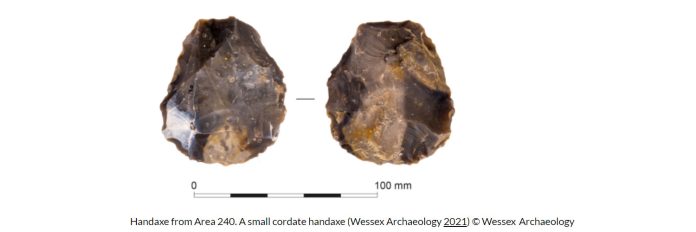Article by Lowri Roberts and Andrea Hamel, with contributions from Andrew Shaw, Claire Mellett and Euan McNeill
The southern North Sea preserves an internationally significant early Middle
Palaeolithic finds assemblage that was discovered through aggregate dredging in
marine aggregate Licence Area 240 off the coast of Norfolk. Area 240 is part of a
regional block of licence areas that have been worked since the 1970s.
Significant discoveries from the assemblage in 2007/2008 sparked further investigations.
Through geophysical and geoarchaeological assessment the cultural material was
found to be associated with a floodplain deposit of the now submerged Palaeo-Yare
river system. The Palaeo-Yare catchment extended beyond Area 240 and was
present in adjacent aggregate areas, which led to the development of a regional
monitoring programme at aggregate wharves to manage and assimilate all new
archaeological data. This was supported by a geological review of any new marine
geophysical or geotechnical surveys to test hypotheses about context.
This process has been ongoing for almost 20 years and here we present a review of all
development-led (grey literature) works. The stratigraphic, chronological and
landscape context of the important Palaeolithic finds from aggregate licence areas in
the southern North Sea are considered in relation to taphonomy and patterns of
inhabitation
Read the full article: The Submerged Palaeo-Yare: a review of Pleistocene landscapes and environments in the southern North Sea. Roberts and Hamel. Internet Archaeology 61. (intarch.ac.uk)

